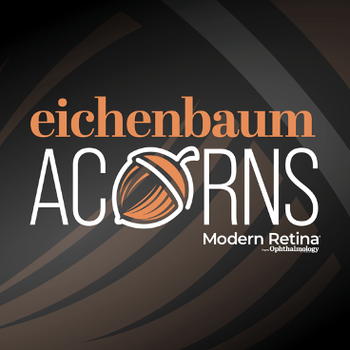
Q&A: Roger A. Goldberg on the 48-Month results from OAKS, DERBY, and GALE open-label extension
Roger A. Goldberg, MD, MBA, presented 48-month data on pegcetacoplan for geographic atrophy (GA) at ASRS 2025 annual scientific meeting. The study showed that continuous treatment preserved 3.16 square millimeters of retinal tissue in the non-subfoveal population, with effectiveness increasing over time. Patients treated early experienced a 35% risk reduction in vision loss. The research, drawing from DERBY, OAKS, and GALE studies, demonstrated the treatment's safety and efficacy, supported by over 700,000 real-world injections, offering promising insights for managing geographic atrophy.
Note: The following conversation has been lightly edited for clarity.
Ophthalmology Times: You are presenting here at the ASRS 2025 meeting. What did your presentation cover?
Roger A. Goldberg, MD, MBA: I was fortunate enough to present the 48-month data now on continuous therapy with pegcetacoplan for the treatment of geographic atrophy. This is patients for the DERBY and OAKS study, which are 2-year clinical trial programs. And then they rolled into an open label extension called the GALE study. And if they entered into the GALE study, about 80% of them then made it 2 years into the GALE study. So we now have 48-month data on a really large contingent and cohort of patients. And I'll cut to the chase and just tell you that in the best performing cohort, which is the non-subfoveal population, monthly treatment over that period of time, preserved 3.16 square millimeters of retinal tissue, which is about 1 1/2 disc areas, or 2 foveal areas. The every-other-month treatment in that similar cohort did similarly well at 2.77 square millimeters. We continue to see now over 4 years of treatment, this increasing effect size over time, so the amount of tissue preserved and the slowing and the growth of GA in years 1 and 2 versus years 3 and 4, we continue to see an increase in that.
OT: With these results in mind, what does this tell us about the timeline for treating GA?
Goldberg: If you waited to treat your GA because, remember the sham-treated patients after 2 years rolled into active treatment in years 3 and 4, they still had an effect in years 3 and 4, but only preserved 1.1 square millimeters in that non-subfoveal population, versus what we saw with 4 years of therapy.
OT: How does this translate into a clinical benefit for patients?
Goldberg: Well, if you look at the microperimetry data, and look at just the central 4 or 16 loci, what was the likelihood of that progressing all 4 spots, or all 16 spots, progressing to an absolute scotoma? And you know, you think about it, that's the critical real estate for our patients. Well, there's about a 35% risk reduction in early-treated patients, the patients who got 4 years of therapy, versus those who waited 2 years and then got 2 years of therapy. We can reduce that risk about 35% in the central 3 and 16 loci. So good functional benefit that starts to manifest itself after several years of treatment. The safety signals in GALE basically very similar parallel to what we saw in DERBY and OAK. And we now have in the real world over 700,000 pegcetacoplan injections, including over 100,000 new starts. So we've got a great safety compendium now in the real world, and we're getting this long term data on the benefits of treatment over prolonged periods of time.
Newsletter
Keep your retina practice on the forefront—subscribe for expert analysis and emerging trends in retinal disease management.





